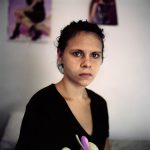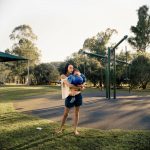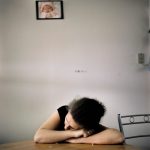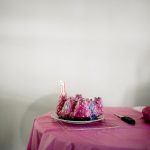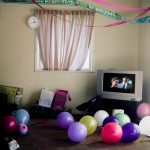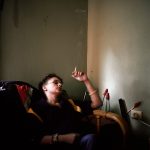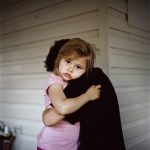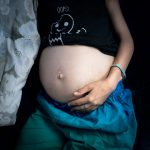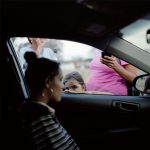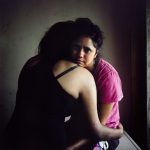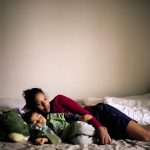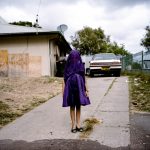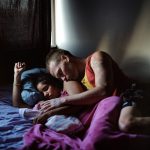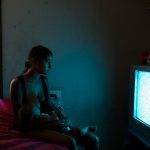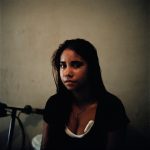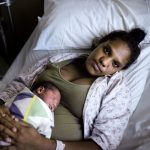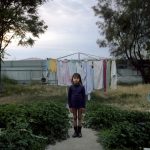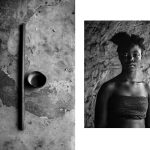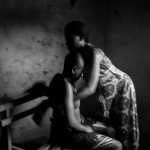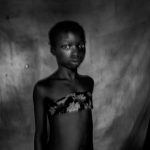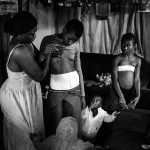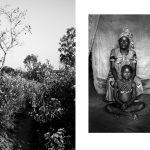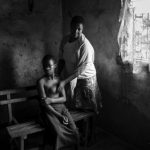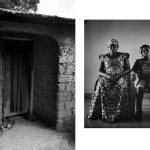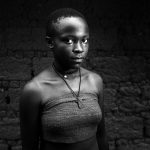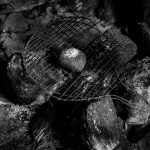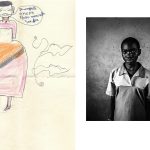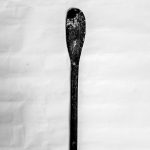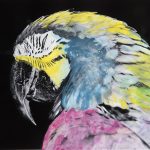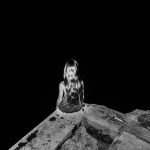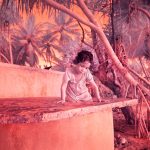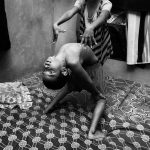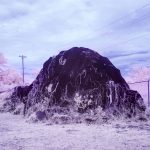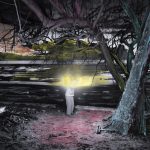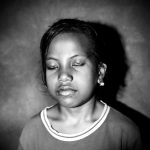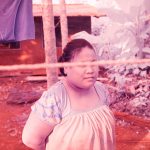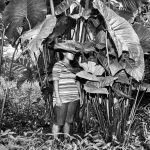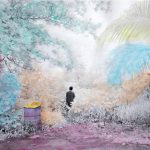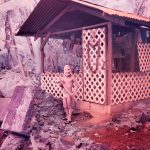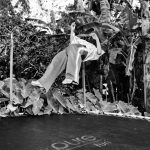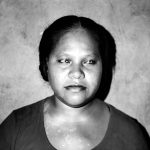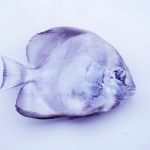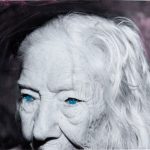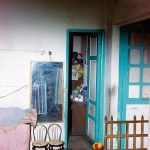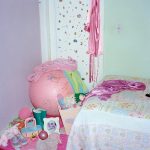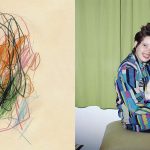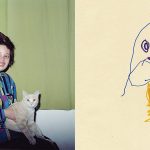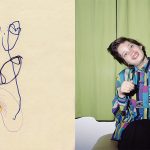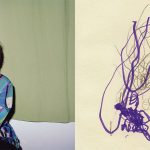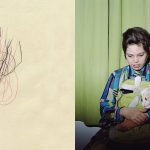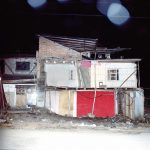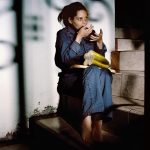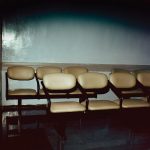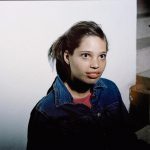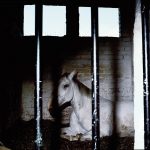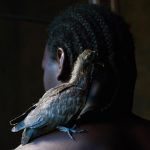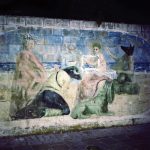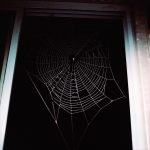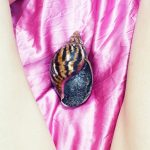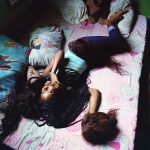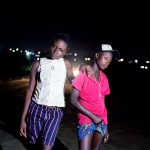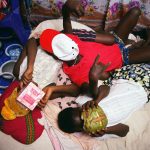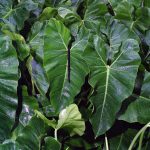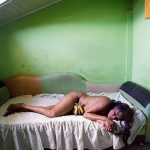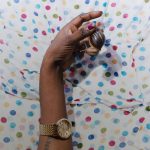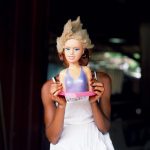PHmuseum Women Photographers Grant
Main Prize Winner
You’ll Know It When You Feel It
by Raphaela Rosella
Rowrow smiled at me as she lay in a hospital bed, 38 weeks pregnant with her fourth child. Her prison greens sat carefully folder next to her, two corrective service officers hovered nearby. At 9:20pm we heard his first cries. I cut his cord and he lay content with his mummy. Yet it’s hard to celebrate a birth when you know what’s coming.
Four days later, with tears in her eyes and breasts full of milk, Rowrow was handcuffed and transported back to prison. The next morning baby John and I travelled 8 hours by train so he could be with family. Seven weeks later, in a gesture of cruelty only bureaucracy could invent, Rowrow was released early on bail – the damage already done.
I never imagined my girlfriends would be incarcerated. Growing up, it was usually our boyfriends. It’s easy to grasp now when I consider, women, specifically First Nations women, account for the most significant growth in Australia’s prison system. I grew up in a small town in Australia notorious for its open drug culture and alternative lifestyles. As young women, our choices were limited; violent relationships and becoming a mother at a young age were normal, and the dream to ‘leave and start a new life’ meant leaving our family, friends and community behind.
Yet, rather than understanding the complexities of trans-generational trauma caused by colonisation and on-going dispossession, or the cyclical nature of social disadvantage in Australia, women continue to be blamed for being homeless, beaten, pregnant, unemployed, addicted to drugs or incarcerated.
As such, I have spent a decade documenting women in my life; my twin, my step-sister, and new and old friends, as they grapple with the complexities of motherhood, trans-generational trauma, turbulent relationships, bureaucratic violence, and the burden of low expectations. Each experience has been rewarding, complex, & at times heart breaking.
By acknowledging the resilience of participants & valuing the process of intimate, long-form storytelling, I hope to create a platform for each young woman’s circumstances, choices, achievements & struggles to be heard & understood. Weaving several narratives of love, longing and belonging, ‘You’ll Know It When You Feel It’ is a long-term project which aims to accentuate these invisible stories in Australia—a country where racism and class bias thrives and where those experiencing the complexities of poverty are misunderstood, demonised and dehumanised.
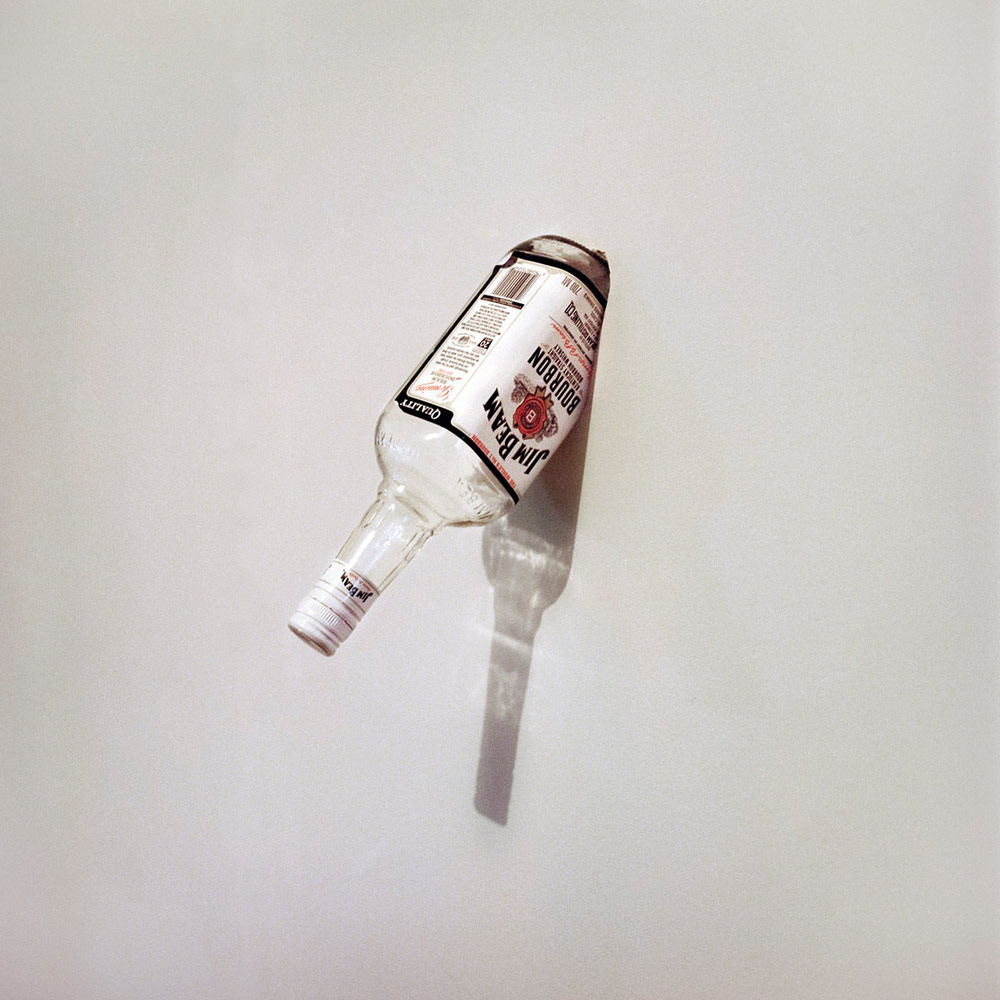
© Raphaela Rosella
Main Prize Winner
2nd Prize
Banned Beauty
by Heba Khamis
Early in the morning before the spirits wake up. She prepares the bath and heat a stone. wake up her daughter. Massages the daughter’s breasts with the stone before her daily bath to go to school.That’s the daily routine for some mothers in Diang village in East Cameron.
Mothers find their happiness in seeing their kids in a good health, waiting for the day their daughters grow up start having breasts and period, as a sign of being a lady. In Cameroon it’s an alert of a nightmare will start for the mothers.
Early marriage, teenage mother and rape are common words there. One out of five girls, is a teenage mother in Cameroon. As a way of protection when the girl start to have a breast her mother or grand- mother heat a stone and massage the breasts to melt the fats and make it disappear, believing that breast ironing will postpone their development and men will not be enticed by their breasts.
In Cameroon girls are beginning to hit puberty as young as seven, and are subject to the practice around at the same age.
For the mothers breast ironing is a way to demonstrate their love and protect their daughters. To hurt in order to protect is a way of showing love. Each village has it’s own way of breast ironing, using different tools.
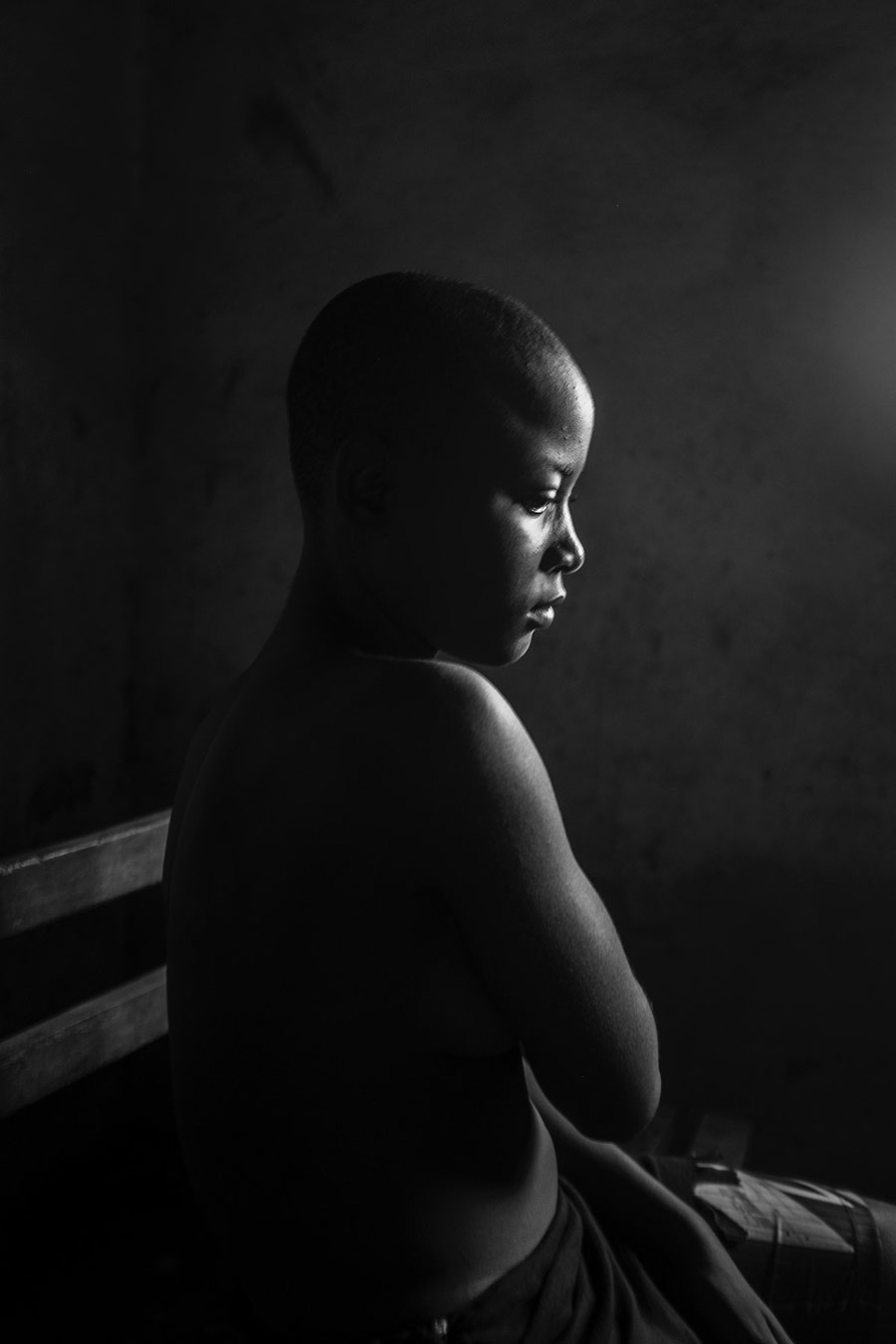
© Heba Khamis
2nd Prize
3rd Prize
The Island of the Colorblind
by Sanne De Wilde
In the late eighteenth century a catastrophic typhoon swept over Pingelap, a tiny atoll in the Pacific Ocean. One of the survivors, the king, carried the rare achromatopsia-gen that causes complete colorblindness. The king went on to have many children and as time passed by, the hereditary condition affected the isolated community and the islanders started seeing the world in black and white.
Achromatopsia is characterized by extreme light sensitivity, poor vision, and the complete inability to distinguish colors. In Micronesia achromats adapt to their reduced level of visual functioning (due lack of recourses like sunglasses and tinted lenses) by using visual strategies such as blinking, squinting, shielding their eyes, or positioning themselves in relation to light sources.
Portraying the islanders (that by their fellow Micronesians are referred to as ‘blind’) and their island resulted in a conceptual selection of images that mask or emphasize the eyes, face, or their ‘vision’ and invite the viewer to enter a dreamful world of colorful possibilities.
Color is just a word to those who cannot see it. If the colorblind people paint with their mind, how would they color the world, the trees, themselves? Initiating my visual research in FSM I tried to find ways to envision how people with achromatopsia see the world. I tried to see the island through their eyes. Daylight is to bright to bear, moonlight turns night into day. I learned that the color the islanders say to ‘see’, or can distinguish most, is red. I photographed with a camera converted to infrared, programmed to read the light and the colors different. After I returned I initiated blind ‘coloring’ sessions where I asked achromats in the Netherlands to paint color back in to my black & white images. Flames light up in black and white, trees turn pink, a thousand shades of grey, a rainbow revisited.
(‘The Island of the Colorblind’ consists of ‘normal’ digital images converted to black and white with Photoshop (shot with Nikon D810) and infrared images (shot with Nikon D700, to IR converted body) shot in Pohnpei & Pingelap in november 2015. The third series within the project are the achromatic picture-paintings.)
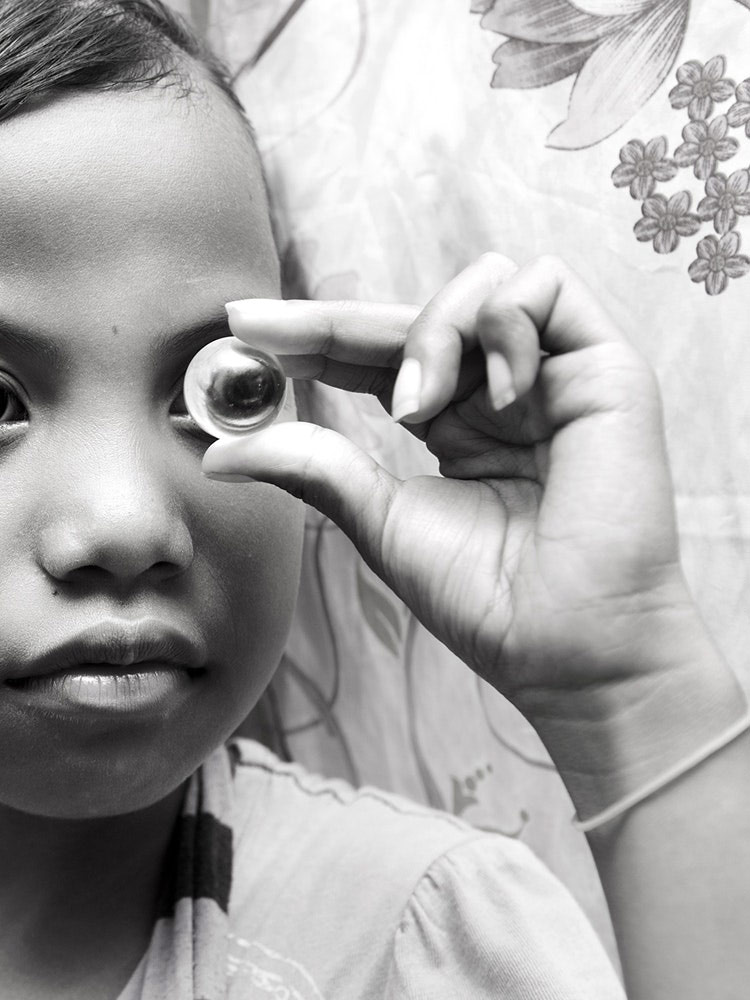
© Sanne De Wilde
3rd Prize
New Generation Prize Winner
Los Mundos De Tita
by Fabiola Cedillo
Tita, my older sister is the protagonist of this project. However, it could be any of us. Tita appears in some of the photographs, she is also the author of the drawings that are part of this project. Every picture opens a door where we can enter and exit at different places; they are a passage through different emotional and sensory states.
I would like to invite you to read the following text, written by my father about “Los mundos de TITA”.
“Tita is my first daughter. She is now 30 years old.
A few days after her birth, she exhibited uncommon symptoms: she clenched her fists, bowed her head, and then her body lost stiffness. These symptoms repeated several times a day, so we took her to a doctor. A general physician then sent us to a neurologist, and, from there, we overtook a long journey, where professionals from different cities diagnosed her illness as epileptic seizure spasms. As parents, we lived these days in a state of shock, unable to digest a reality that we did not understand and that overwhelmed us.
Etiology is unimportant now. Electroencephalograms and multiple tests concluded that Tita suffered from the West syndrome, a serious and rare brain disorder that generates short, axial muscle contractions; these produce psychomotor retardation with pervasive development disorder. Several neurologists agreed this condition later degenerated into the so-called Lennox Gastout syndrome; it meant childhood epileptic encephalopathy with mental damage and severe therapeutic resistance. Tita would need rigorous full time attention and much medication for the rest of her life.
Tita’s condition made us abandon many of our life projects. However, two years later we decided to have Fabiola. By the time she had turned five, she had already become the older sister. Mentally Tita has stayed at the same age; she will always be a child. Since then, our communication is based on hugs and deep gazes. Her fragility and hyperactivity drive us forward into taking care of her without rest.”

© Fabiola Cedillo
New Generation Prize Winner
Winner of the 2018 Organ Vida International Photography Festival Solo Exhibition
Butterflies Are Sign Of Good Thing
by Ulla Deventer
“Maryland Maryland
Is my dream
And I wish to be there
And I will be there
Whether they like it or not
It’s true
I want to be there and I will be there
Because
Anything that I always think
And imagine or
I pray to God”
Exploring Accra and surrounding neighbourhoods, this is a multifaceted research on the plights and living conditions of amongst the youth, particularly sexworkers, who have dreams to leave their country, but also minors, who struggle to avoid entering the prostitution field. Old tragedies and nightmares fuel an inner strength to survive in a society despite economic hardships, religious confines, and strong misogynistic views.
The series can be understood and observed as a poetic form. It stays open to imaginations, rather than straightforwardly depicting the realism while exploring the relationships between artist and protagonist.
This project was realized in collaboration with video artist P Sam Kessie and grant-aided by the VG-Bildkunst. (The pictures are all taken by Ulla Deventer). It can be extended with texts, videos and drawings.
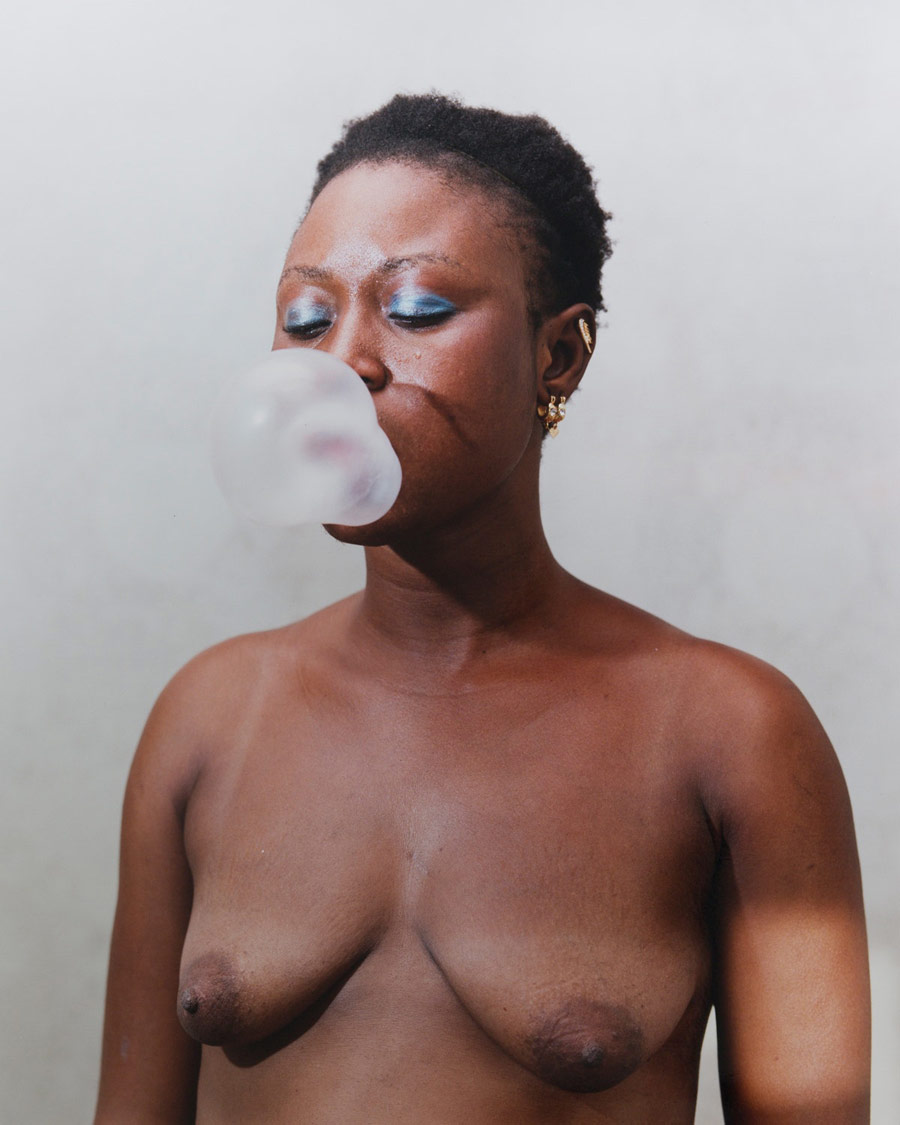
© Ulla Deventer
Winner of the 2018 Organ Vida International Photography Festival Solo Exhibition
PHmuseum Women Photographers Grant
Share:

